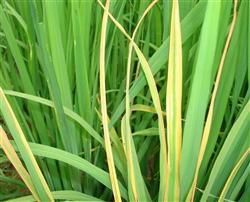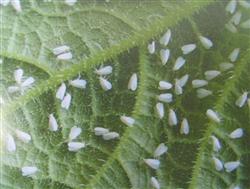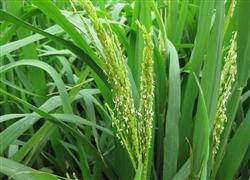Prevention and control of rice diseases and insect pests: what medicine is good for rice bacterial blight?

What medicine is good for rice bacterial blight? What are the hazards of rice bacterial blight? What are the causes of rice bacterial blight? Please introduce that bacterial blight is one of the main diseases of rice. Once it occurs, the yield can be reduced by 10%, and in severe cases, it can be reduced by 50-60%. Therefore, it is very important to strengthen the control of bacterial blight. The causes of rice bacterial blight are as follows: 1. The relationship between disease and climatic conditions high temperature, high humidity, strong wind and rainstorm are the climatic conditions for the prevalence of bacterial blight. The disease began when the field temperature was 17 ℃, the peak period was 26-30 ℃, the incubation period was short, the bacterial invasion to the symptoms only took about 3-5 days, the number of re-infection increased, the continuous low temperature and high temperature lower than 17 ℃ and higher than 35 ℃ would not occur, and the relative humidity was more than 90%, which was beneficial to the infection of the host. 2. The relationship between disease incidence and disease resistance and growth period of rice varieties there were some differences in resistance to bacterial blight among rice varieties. Generally, glutinous rice was the most resistant to bacterial blight, japonica rice was more resistant than indica rice, long-stem and narrow-leaf varieties were more resistant than dwarf broad-leaf varieties, fertilizer-tolerant varieties were more resistant than non-fertilizer-tolerant varieties, and varieties with less water holes on leaf surface were more resistant to disease than varieties with more water holes on leaf surface, while planting susceptible varieties were more likely to become epidemic. The same variety was more resistant from seedling stage to tillering stage, decreased resistance at the end of tillering stage, susceptible to disease at booting stage, and most susceptible to disease at heading stage. 3. The relationship between disease incidence and cultivation techniques. When the application of nitrogen fertilizer is too much, too late and too concentrated, especially if the ear fertilizer is not applied properly, the plant will grow madly, the plant rows are dense, the ventilation and light transmission is poor, and the leaves are thick and green and tender, the disease resistance of the plant will be weakened. The disease caused by water flooding is more serious than that without water flooding. Both series irrigation and flood irrigation in the field can directly promote the spread of the disease, while the rice plants soaked in deep water for a long time have a greater impact on the disease, which is mainly due to the high humidity in the field, which is beneficial to the reproduction and infection of bacteria, and deep irrigation can increase the accumulation of toxic substances in the soil. the disease resistance of rice plants decreased, and the incidence of deep irrigation after jointing was more serious. Control methods of rice bacterial blight: 1. Select disease-free seeds. 2. In the scientific management of the field, it is necessary to apply sufficient base fertilizer, early topdressing, skillful application of ear fertilizer, no partial application of nitrogen fertilizer, balanced application of nitrogen, phosphorus, potassium and micro-fertilizer. Strictly prevent flooding of seedlings, cultivate high-quality strong seedlings, and advocate dry raising of seedlings. The field should be frequently irrigated in shallow water, dry and wet, dry and wet alternately, timely and moderately drying the field, and the affected fields should not be exposed to heavy sun, so as not to aggravate the disease. The method of chemical control of rice bacterial blight: the principle of "one piece at a time and one piece at a time" should be achieved by chemical application in the field, and the disease center should be blocked by spraying in time. If the climate is favorable for the disease, a general survey and control of similar fields should be carried out to control the spread of the disease. In the areas with frequent occurrence of bacterial blight, Yekuning was used to prevent booting stage, flooded fields and fields hit by storms, and 100 grams of Ye Kuning with 60 kg of water per mu were sprayed in time after water drying and sunny days. In the early stage of bacterial blight, the loss caused by bacterial blight can be reduced and reduced by spraying 100 grams of Ye Kuning with 60 kg water per mu every 5-7 days for 2-3 times in a row. Click to get more rice planting techniques click to get more food crop planting techniques
- Prev

Control of rice diseases and insect pests: how to control rice whitefly?
How to control rice whitefly? What are the hazards of rice whitefly? How does rice whitefly happen? Please introduce the harm of rice whitefly: Rice whitefly, also known as rice whitefly, is a new pest on rice. In addition, damage to sugarcane, corn and other food crops, as well as horse tang, paspalum grass, gold and other crops.
- Next

Prevention and control of rice diseases and insect pests: what if it is difficult to heading rice?
What if it is difficult for rice to heading? What causes the difficulty in heading of rice? Please guide the reason for the difficulty of rice heading: it is difficult for rice to heading, or the phenomenon of neck wrapping appears. The rice grains wrapped in the leaf sheath will generally become empty grains because they cannot be pollinated and fertilized in time, which has a great impact on the yield. ...
Related
- The first cup of black tea in spring, the flavor and history of tea gardens in Kenya, Africa
- The computer can not only choose potatoes, but also grow tea rice. AI will grow winter oolong tea champion.
- It is not only the inflated tea bitten by insects, but also engraved with the four seasons tea in Beipu.
- The Oriental Beauty Tea Festival in Zhuxian County takes the stage at the weekend to experience the plus-size feast of oil tea.
- & quot; Oriental Beauty Tea & Exploration of Emei in Hsinchu, the hometown of quot;
- The new variety of strawberry "Tainong 1" dessert is the first choice with mellow aroma. Crimson gorgeous
- History of Tea in Taiwan: from Wild Inner Mountain to Export Tea Garden
- Two types of Taiwan Oriental Beauty Black Tea won the British three-Star Award for Childhood Tea Xiang Zhang Jiaqi changed from pilot to champion tea maker.
- Banana species and varieties: the planting history of Taiwan Xianren banana and dwarf banana is long, is banana disease resistant?
- Coffee planting Technology: Qianjie Coffee from Seedling to harvesting

